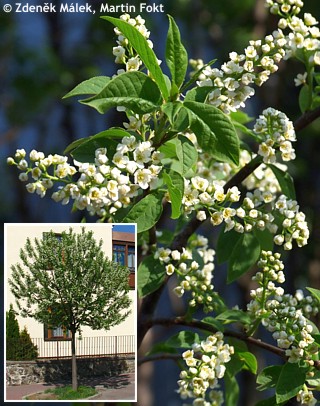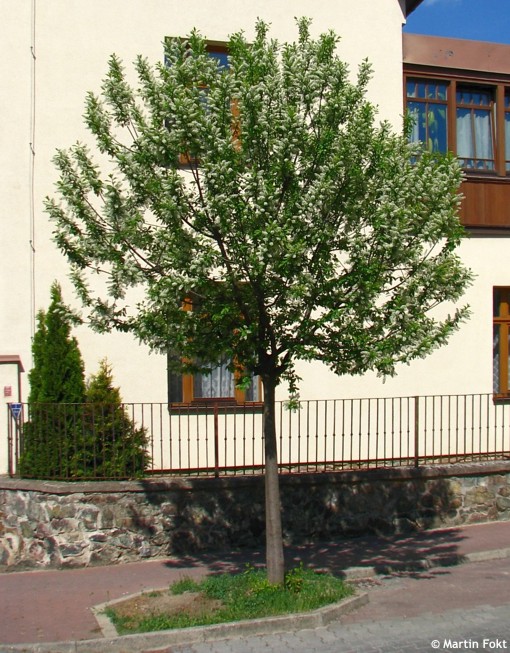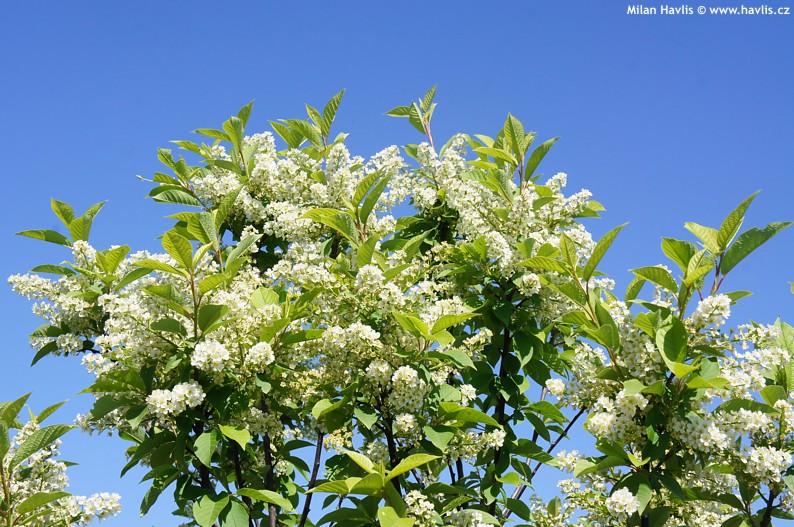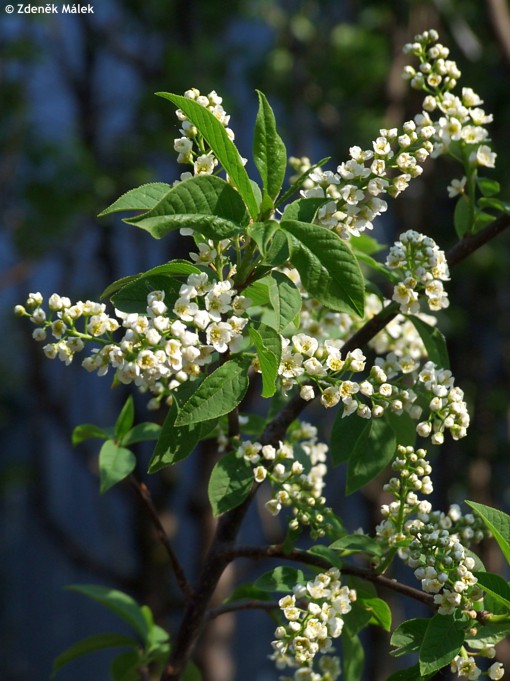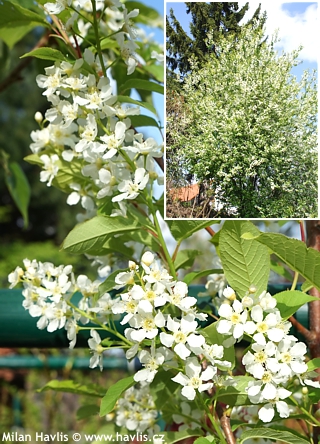Prunus padus 'NANA' dwarf bird cherry
size/type
small tree,small tree
usual height
3-5m
usual width
2-4m
leaves
deciduous broadleaf
colour of leaves
flowers
showy
colour of flowers
blooming time
April-May
location
full to partial sun
soil type
any (acidic to alkaline)
soil moisture requirements
evenly moist (dislikes drought)
USDA zone (lowest)
3 (down to -40°C)
winter protection
for zone 5+6

for zone 7

categorized
Prunus
European bird cherry is our native plant which grows wildly in all almost all parts of our continent except for its hottest southern regions. They are melliferous and produce abundance of small berries offering a nice autumn feast for birds. In the nursery trade a few varieties have become quite popular, they have vary by size, canopy shapes, and even the colour of flowers and leaves.Description of the plant:
Nana is a typical name for a dwarf plant and this European bird cherry is one of them. It makes a compact, rounded crown that is rather small: it grows slowly making only some 3-4m in diameter which is perfect for small gardens or narrow streets. In late April appear slender racemes of tiny, white, very scented flowers. They are almost identical to those of prunus laurocerasus (cherry laurel). Leaves are mid green, oval to elliptic, deciduous. Bird cherry is ideal for places where more demanding trees find the soil too difficult to cope with. It can take almost any soil type, from sandy and dry in summer to clay and heavy ground. If you make sure the plant does not stand in water for the first few months after transplanting you can be sure it will establish happily in its new home. However, on too dry locations it will bot thrive and tend to be short-lived. It can spread by suckers and its roots may heave weaker foundations if placed too close. Perfectly hardy to at least -40 °C (USDA zone 3).
Last update 26-11-2012; 20-02-2022
QUICK PRICE OVERVIEW
CURRENTLY SOLD OUT
WANT TO TRY A SIMILAR PLANT?












